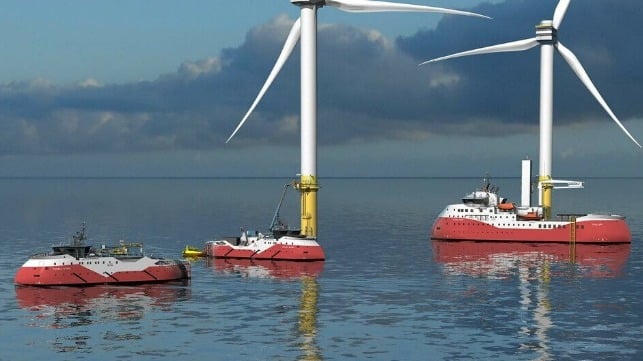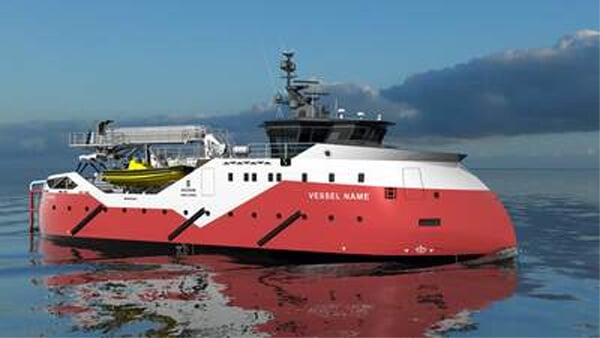Hybrid SOV Design Lowers Costs Supporting More Wind Farms

As the offshore wind energy sector continues to evolve, operators especially in the maintenance and operations phase are faced with the challenges of lowering costs and increasing efficiency. Norway’s Ulstein has developed a new hybrid design for a smaller service vessel that they believe fills a critical gap in the market and reduces costs for the operations of the wind farms.
While the world needs more renewable energy sources, costs continue to be a significant challenge for offshore wind. To achieve financial viability, developers have been looking to larger projects, but Ulstein focused on an approach with could lower CAPEX by 50 percent, operating costs, and contribute to making smaller, closer-to-shore wind farms more economical for the developers.
Currently, they point out the walk-to-work sector relies mostly on the larger Service Operation Vessels (SOV) which can stay onsite for an extended period and typically accommodate up to 100 people. Day projects are supported by the crew transfer vessels.

Smaller SOV fills a gap in the market and offers 50 percent lower CAPEX and OPEX (Ulstein)
Ulstein’s proposal for the SX250 is a vessel that can bridge the gap between CTVs and the current large SOVs. Its smaller vessel would measure approximately 47 meters (154 feet) and provide accommodations for 32 to 40 individuals. It would have a top operating speed of 10 knots and use the designer’s Twin X-Stern to enhance seakeeping capabilities.
According to the company, the vessel would be suited for sea conditions up to 2 meters (6.5 feet) and best for small to mid-sized wind farms located in areas with calm or moderate sea states. These could be closer or shore or in shallow waters.
Another concept is for the smaller SOVs to work in unison with the larger vessels. According to Ulstein, two of three of the SX250 could be managing smaller jobs at the wind farm while the traditional, larger SOV focuses on the larger tasks.
The new vessel concept Ulstein says relies on existing off-the-shelf hardware and technology to ensure effective walk-to-work operations while reducing CAPEX and OPEX. The vessel can be customized with different arrangements and topside equipment and depending on the operational needs, various setups such as a gangway system, a daughter craft, deck storage, or a work or observation ROV.
Filling the perceived gap in the market Ulstein says provides a unique opportunity to lower CAPEX and OPEX by up to 50 percent versus the current vessels. As a smaller vessel, it also contributed toward the push toward sustainable operations and presents a unique new solution to support the broader building out of the offshore wind sector.
